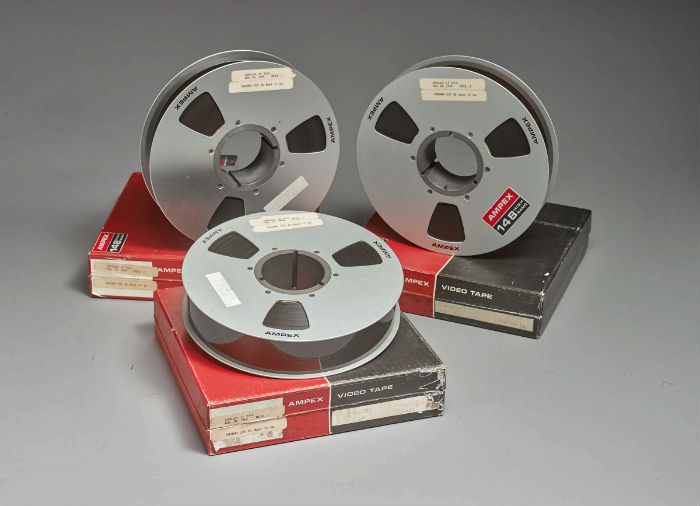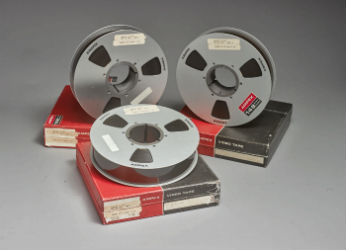
NEW YORK – On Saturday, Sotheby’s, on the 50th anniversary of the Apollo 11 lunar landing, sold three original NASA videotape recordings of that historic event for $1.82 million. Three bidders competed for the videotapes for nearly five minutes on the phone and online during Sotheby’s ongoing auction dedicated to Space Exploration. This result is more than 8,000 times the price paid for the tapes at a government surplus auction in 1976 by then-NASA intern Gary George.
Unrestored, unenhanced and unremastered, the original, first-generation NASA videotape recordings of the Apollo 11 Lunar EVA represent the earliest, sharpest and most accurate surviving video images of man’s first steps on the moon. At a combined run time of 2 hours and 24 minutes, the tapes capture everything from Neil Armstrong’s declaration: “That’s one small step for a man, one giant leap for mankind,” marking the historic moment the first human set foot on another world, to the “long distance phone call” with the president of the United States, and the planting of the American flag.
The present videotapes are the only surviving first-generation recordings of the historic moon walk and are sharper and more distinct than the few tapes that have survived from the contemporary network television broadcasts – all of which endured some loss of video and audio quality with each successive transmission from microwave tower to microwave tower.
Viewed only three times since June 1976 (perhaps the only times since they were first recorded late in the evening on 20 July 1969 at NASA’s Mission Control Center, Houston, Texas), the three reels of 2-inch Quadruplex videotape transport viewers to the big screen monitor at Mission Control, which displayed clearer images with better contrast than those that the more than half-billion-person television audience witnessed that momentous July day on their home sets. Home viewers watched video that had been transmitted over a 1,600-mile relay of microwave transmission towers to the major television networks in New York City, with each transfer causing a bit of deterioration to the picture quality. In contrast, Mission Control saw the same video that is on these 2-inch Quadruplex videotapes: moving pictures sent directly to Houston from closed-circuit TV transmissions from the lunar surface beamed to 64-meter-diameter radio telescopes at the Parkes and Honeysuckle Creek Observatories in New South Wales and Canberra, Australia, respectively, and NASA’s own similar-sized antenna in Goldstone, California.



